(单词翻译:单击)
The Holocaust showed the horrors humans can inflict on one another. Yet the resilience displayed by those who lived through the Nazis' brutal reign shows the strength of the human spirit. Those who escaped the Holocaust did so through cunning, daring, and the sheer unwillingness to give in to the evil around them.
纳粹对犹太人等其他少数族裔的大屠杀表明人类可以制造多大的恐怖。而那些有幸逃过纳粹灭绝统治的人们所展现的韧性则又说明人类精神的力量多么顽强。他们聪明、大胆、不愿向邪恶投降,死里逃生。
10.Kazimierz Piechowski
10.卡兹米尔兹·佩特罗夫斯基
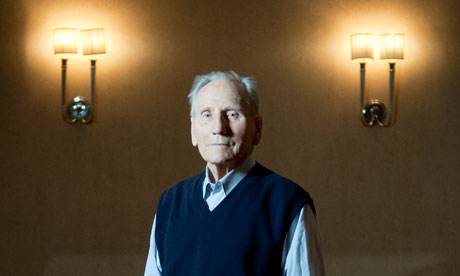
Around 1.1 million people were killed in the Auschwitz concentration camps between 1940 and 1945. Though the Nazis were murdering hundreds of people each hour, only 144 were able to escape during the camp's five years of operation. Among them was Kazimierz Piechowski, whose breakout with three other men reads like a Hollywood drama.
在1940年到1945年间,约有110万人死于奥斯维辛集中营。纳粹集团每小时杀害几百人,在集中营发挥作用的5年时间里,只有144人逃出来。其中包括卡兹米尔兹·佩特罗夫斯基,他与另外3人逃跑的经历就像一部好莱坞电影。
Piechowski had already tried to flee from his native Poland when the Nazis arrived in 1939. The 19-year-old was caught on the Hungarian border on his way to join resistance forces. Eight months later, he was one of the earliest people shipped to Auschwitz, on the second-ever transport.Piechowski was forced to build parts of the camp. He was also among the workers forced to move the bodies of men, women, and children shot by the SS. The prisoners were forced to work for up to 15 hours each day. Some of the prisoners were given work that granted them access to the list of planned executions. One of Piechowski's friends, Eugeniusz Bendera, learned that he was scheduled to be shot. Bendera told Piechowski he could organize a car to escape, but a car wasn't enough.They had access to the storerooms, where everything from uniforms to ammunition was kept. One morning, Piechowski loosened a bolt on a trapdoor into the storerooms' coal cellars. It was June 20, 1942, a Saturday—there were fewer Germans around on the weekend. The four plotters gathered containers of kitchen waste and told a guard that they were tasked with taking the waste away. The guard waved them out of the main camp.The four men stole four SS uniforms. Bendera used a copied key to get into the camp's garage and stole the fastest car in Auschwitz, which happened to belong to the camp's commander. They drove for the main gate but didn't know if they would need a pass to get out. As they approached, the gate remained closed. It fell on Piechowski, in the most senior officer's uniform, to do one of the most fateful impersonations in history. In his best German, he yelled at the guard to open up, threatening retribution otherwise. The scared guard obeyed.After two hours driving on back roads through the forest, the four men abandoned their car and set out on foot. Piechowski and Bendera joined the Polish Home Army to fight the Nazis. According to Piechowski, their daring breakout led to one of the most iconic images of the Holocaust—numbered tattoos so that inmates could be permanently identified. According to Piechowski, "No other camp used numbering—it was our escape that led to it."
1939年纳粹侵入家乡波兰时,佩特罗夫斯基已经计划逃跑了。19岁的他打算去参加防御部队,途中却在匈牙利边境被抓。8个月后,他成为早期被运往奥斯维辛集中营的一员,是第二批。佩特罗夫斯基被迫修建集中营。他还被迫搬运男女老少的尸体——被党卫军枪杀的人。集中营的犯人每天必须工作15个小时。其中有些人因为工作被允许看到屠杀名单。佩特罗夫斯基的一位朋友,埃乌盖纽什·本德拉获悉自己在被害名单上。本德拉告诉佩特罗夫斯基,他能找到一辆车逃跑,但是一辆还不够。他们来到储藏室,里面存有制服、弹药等一切物资。一天早上,佩特罗夫斯基解开一扇地板门的门闩——这扇门通往储藏室的地下煤窖。那是1942年6月20日,星期六——周末德国人少些。4个密谋者把厨房垃圾集中到一起,告诉卫兵他们接受了运走垃圾的任务。卫兵打发他们离开了集中营。4人偷了4套党卫军制服。本德拉用一把配好的钥匙进入了集中营车库,偷走了奥斯威辛速度最快的车——碰巧属于集中营指挥官。他们开车去了大门,但不知道出去是否需要通行证;到达时,大门紧闭。佩特罗夫斯基——身着级别最高的制服,他的行动可算历史上最具决定意义的模仿。他用一口标准的德语向卫兵大吼开门,威胁他们不开门就会获罪。受到惊吓的卫兵服从了。沿着森林里的小路开了两个小时之后,4人弃车而去。佩特罗夫斯基和本德拉加入波兰家乡军对抗纳粹。据佩特罗夫斯基所说,他们大胆出逃促使大屠杀出现了一项标志——编号纹身,以便犯人总能被认出;"其他集中营都不使用编号——是我们逃跑导致的"。
9.The Stermer Family
9.史特门一家
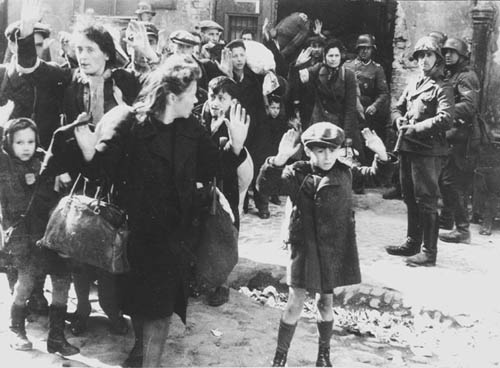
In 1962, Frenchman Michel Siffre set a world record for time spent living underground. Yet Siffre's 205 days had already been beaten by more than a dozen women and children. Starting in 1943, 38 Jews hid beneath the wheat fields of Western Ukraine. They were there for 344 days, but the story remained untold until 1993, when American caver Chris Nicola uncovered it.
1962年,法国人迈克尔·斯佛尔创造了待在地下室最久的世界纪录。然而,斯佛尔205天的记录早已被十多位妇女儿童打破。从1943年开始,38位犹太人藏在乌克兰西部麦田地下。他们在那里度过了344天,但直到1993年美国洞穴运动爱好者克里斯·尼古拉发现了这个地方,这个故事才被披露。
Nicola was exploring Priest's Grotto, the world's 10th-longest cave at 124 kilometers (77 mi) long. The humidity is 90 percent there, and the temperature hovers around 10 degrees Celsius (50 °F). This was supposed to be a largely untouched spot, but Nicola noticed shoes, buttons, and other signs that people had lived there. Locals said that the items had been there for decades. Nicola investigated further and encountered the Stermer family, who revealed that they and several other Jewish families had taken refuge in the cave during World War II. They'd been fortunate to find an underground freshwater lake, but food was more difficult. The men of the group had to go above ground to bargain for grain or steal vegetables. Dough and roots were almost their entire diet. They set up a kitchen underground and even a millstone for grinding flour. The hideaways suffered from scurvy and lost up to a third of their bodyweight. Miraculously, no one got seriously ill.Gathering firewood was most dangerous. The men had to chop down trees in the dark, but it was noisy. One day after getting grain, some of the Jews were followed back to the cave by Ukrainian police. They were saved by a sack of food lodged in the cave entrance. The authorities believed the Jews were armed and had multiple entrances, so they just waited. No one left the cave for six weeks, and the Nazi collaborators eventually gave up.When the Germans were forced away by the Red Army, one of the group's surface helpers dropped a note in a bottle into the cave entrance. "It was unbelievable to think that I could go outside, go around in daylight, and nobody was going to kill me," said Shulim Stermer, who was in his twenties at the time. All of the 38 people that entered the cave came out alive.
尼古拉正在"牧师的洞穴"探险——其长度达124千米(77英里),世界排名第十。那里湿度高达90%,温度在10°C(50°F)上下浮动。人们认为这是一片处女地,但尼古拉发现了鞋子、纽扣和人类居住过的其他痕迹。当地人说这些东西已经存在几十年了。尼古拉继续调查,发现了史特门一家——他们说他们和其他几个犹太家庭在二战中到这里避难。他们很幸运地找到一处地下淡水湖,但是获取食物就困难了。男人必须去地面上讨价还价买粮食或者偷蔬菜。他们几乎就吃生面团和根。地下建有厨房,甚至还有一个磨面的磨石。躲在这里的人们不仅患有坏血病,体重还减少了三分之一。神奇的是,没人患大病。拾柴火是最危险的。男人必须趁黑砍下树枝,但这会发出噪声。有一天找到谷物回来时,有人被乌克兰警察跟踪了。多亏放在洞口的一大口袋食物,他们幸而得救。当局认为他们有武装和多个进出口,于是静静等待。6个星期,没人离开洞穴,纳粹最终放弃了。红军赶跑德国人之后,其中一位帮助过这群犹太人的人把一张纸条塞在瓶子里扔进了洞穴。"难以置信我竟然能出来,在白天四处走动,而且没人追杀。"沙林·史特门这样说——当时他二十几岁。洞穴里的38人都活着走了出来。
8.Leo Bretholz
8.里奥·布雷特霍尔茨
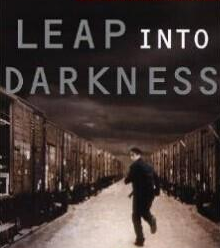
Leo Bretholz was 17 when he was forced to flee from his home in Austria. It was 1938, and Jewish men were being arrested daily by the Nazis. Bretholz's mother bought him a train ticket to Trier, near Germany's border with Luxembourg. The young runaway forded the Sauer River to escape Germany and crossed to Belgium. But that was only the start of seven years of extreme running, hiding, and a lot of escaping.
里奥·布雷特霍尔茨17岁时被迫逃离奥地利的家乡。那是1938年,纳粹天天都在抓捕犹太男丁。布雷特霍尔茨的母亲给他买了一张火车票到特里尔——靠近德国与卢森堡的边界。年轻的亡命徒涉过叙尔河以躲避德国,来到比利时。但这只是7年逃亡、躲藏生涯的开始。
Bretholz slept in ditches, found refuge in monasteries, and hid with his people in Jewish ghettos. He was arrested in 1940 and escaped by digging under a fence. He was captured by the Nazis a further six times, but he made his most spectacular getaway in 1942. On November 5, he was crammed into a cattle car on a Nazi train headed for Auschwitz. Along with another man, he spent the day prying at the bars of his cell. Then, when darkness fell, he leaped from the moving train. He needed to wait for the train to slow on a bend and avoid the searchlights operated by Nazi guards at those points in the track.In the late 1940s, Bretholz joined a Jewish resistance group fighting the Nazis, forging IDs, and hunting down German troops. He moved to the US after the war and became a key witness in lawsuits aiming to get compensation from the French rail company that had been complicit in transporting Jews to their deaths. He wrote a book with a title inspired by his great escape, Leap Into Darkness.
布雷特霍尔茨在下水道里睡觉,在修道院避难,与其他人一起在犹太聚居地躲藏。1940年他被捕,却在栅栏下挖通道逃跑。他还被纳粹抓住过6次,而1942年那次逃跑最奇特。11月5日,他被塞进纳粹开往奥斯威辛的一列火车的牛车车厢。他与另外一人一起,一整天都在监牢门口打听别人。随后,夜幕降临,他跳下奔驰的火车。他需要等火车在弯道减速,以避开铁轨某些地方由纳粹卫兵控制的探照灯。40年代后期,布雷特霍尔茨加入一个对抗纳粹的犹太组织:伪造身份证,纠缠德国军队。战后他移民美国,成为诉法国铁路公司获取赔偿案的关键证人——这个公司参与了把犹太人运至奥斯维辛的阴谋。他写了一本书,书名的灵感来自他神奇的逃亡经历,《跳入黑暗》。
7.The Sobibor Breakout
7.索比堡大逃亡
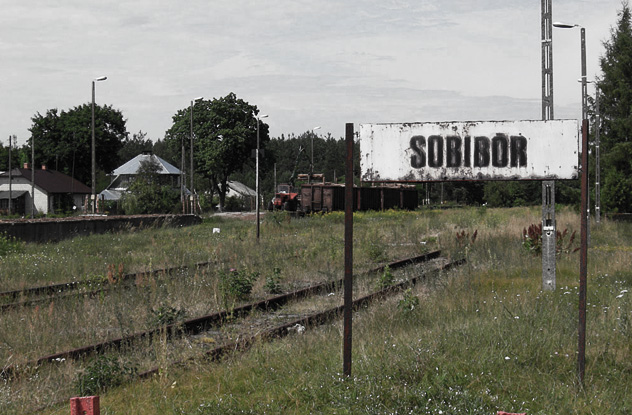
One-third of the six million Jews killed in the Holocaust died in three camps in east Poland between March 1942 and October 1943. At one of these, Sobibor, victims were shipped in on a train and were told they were being showered to prevent disease. The prisoners would often celebrate this news after so many hours crammed into a rail car. Then they were led into a gas chamber.
在死于大屠杀的6百万犹太人里,有三分之一于1942年3月至1943年10月在波兰东部的三个集中营遇害。在其中一个集中营,索比堡集中营,受害者被火车送来,被告知将接受预防疾病的淋浴。在拥挤的火车上度过漫长的时间后,他们常常兴奋得庆祝这个消息。随后他们就被引入毒气室。
The Nazis kept 600 "work Jews" alive, but they would continually kill and replace these men to prevent a chance at rebellion. By the summer of 1943, the Soviets were nearing the camps, and Himmler wanted to erase all trace of them. The Jewish workers realized that their deaths were inevitable when trains stopped arriving. Some managed to make a run for it, but 10 Jews were executed for each escapee. A minefield was laid around the camp. A mass outbreak was the only option left.The Jews made a plan to break out in October when the camp's toughest SS officer was on leave. At 4:00 PM on October 14, the schemers lured 11 guards into individual traps. The camp's phone lines were cut. But as the daily roll of the prisoners was being called, a guard found one of his dead colleagues and raised the alarm. One of the leaders of the rebellion leaped on a table and told everyone to run, telling the crowd to "let the world know what has happened here."During the escape, 250 people were killed by the Nazis. Among the 58 that survived was 16-year-old Thomas Blatt, who was shot and left for dead by a farmer during his escape. He moved to California and has published works and given interviews about his experiences. He testified in 2009 against one of the camp guards, Jan Demjanjuk, and also became one of the few survivors to privately interview someone behind the atrocities.
纳粹让600个"犹太工人"继续活着,但是他们不断杀掉其中的一部分,用其他人替换,防止出现叛乱。到1943年夏天,苏联人已经来到集中营附近,希姆莱想要消除集中营的所有痕迹。没有火车再来,犹太工人意识到他们一定会死。有人逃跑了,但是每逃掉一人另有10人被杀。集中营四周还布置了一片雷区。集体逃亡是唯一的选择。犹太人计划10月逃跑,那时集中营最残暴的党卫军官员正好不在。10月14日下午4点,密谋者引诱11名卫兵分别进入陷阱。集中营的电话线被割断。但是对犯人进行日常点名时,一个卫兵发现了一具同事的尸体,拉响了警报。一个反叛领袖跳上桌子,大呼快跑,让大家"告诉世界这里发生了什么"。逃跑过程中,250人被纳粹杀害。58人被救,其中包括16岁的托马斯·布拉特,他在逃亡途时中枪,被一个农民抛弃。他移民加州,出版关于自己经历的作品并接受采访。2009年,他指证集中营卫兵扬·丹珍朱克;他还是对暴行背后的毒手进行私下采访的少数幸存者之一。
6.The Arshanskaya Sisters
6.阿希安斯卡娅姐妹
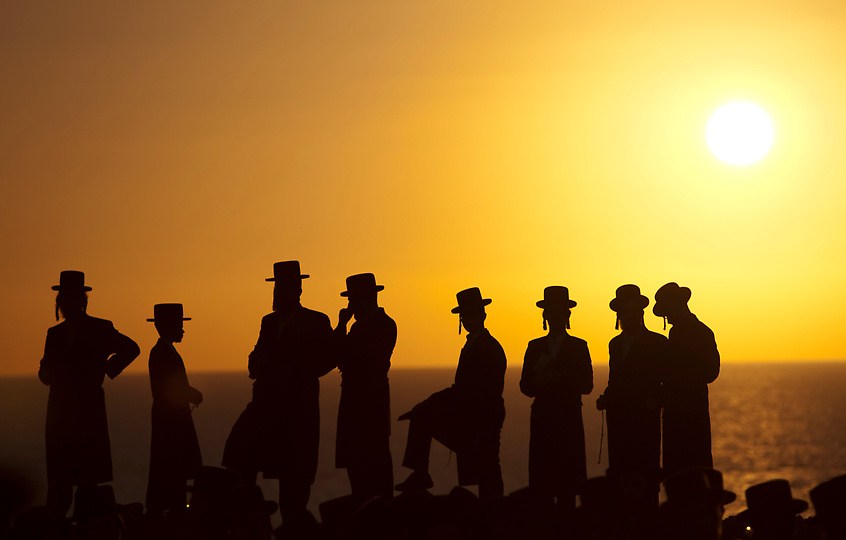
In the winter of 1941, Nazi troops invaded the Ukrainian city of Kharkov. Many Jews died, some hung from lampposts. The soldiers forced thousands to march 20 kilometers (12 mi) out of the city. The Arshanskaya sisters, 14-year-old Zhanna and 12-year-old Frina, were among 13,000 people crammed into an old tractor factory designed to house 1,800.
1941年冬天,纳粹军队入侵乌克兰城市哈尔科夫。许多犹太人死去,有些人在路灯柱上吊死。士兵强迫几千人在城外走了20千米(12英里)。阿希安斯卡娅姐妹,14岁的詹娜和12岁的弗林娜,也随13000人一起被塞入一间设计容纳1800人的旧拖拉机工厂。
The girls' father bribed a Ukrainian guard with a golden pocket watch to secure the release of one of his daughters. He told Zhanna to run, since the older girl had more chance of surviving. Zhanna never saw her father again but was reunited with Frina within a few days. The younger girl never revealed how she was able to get away. The sisters found their way to an orphanage, where the staff created fake identities for them.Zhanna had been playing the piano since she was five. When a local piano tuner heard her play, he offered the two girls a place with a musical troupe that entertained the occupying Nazi forces. The girls began hiding in the spotlight, providing entertainment for the people who had tried to condemn them to death. "We were a precious commodity for the Germans," Zhanna later said. Their value to the Nazis saved their lives. They were ratted out as Jews, but the soldiers declared that there was no proof and kept the girls around. By the end of the war, the musical troupe was taken to the Nazi heartland of Berlin.When the liberators arrived in 1945, the girls were taken to a camp run by American officer Larry Dawson. His brother was an accomplished musician, and the Holocaust was no barrier to love stories. Zhanna married David Dawson after moving to the United States. She has one memento from her life before the Nazis arrived: a sheet of her favorite music. Zhanna grabbed it and kept it with her when her family was forced from their home. It is kept in a safety deposit box, as a treasure for future generations of her family.
女孩儿们的父亲用一只金怀表贿赂了一个乌克兰卫兵,请他一定放走一个女儿。他让詹娜逃跑,因为大女儿生存的机会更大。詹娜从此再没见过父亲,但在几天后便与弗林娜团聚。小女儿从不明白她竟然能逃走。姐妹俩来到一家孤儿院,里面的工作人员为她们伪造了身份信息。詹娜5岁起就开始弹钢琴。当地一个钢琴调音师听见她弹琴后,介绍两个女孩儿去一个音乐剧团——为纳粹占领军队表演。姑娘们开始藏在聚光灯下为企图杀掉自己的人演出。"对德国人而言,我们是珍贵的消费品。"詹娜后来说。她们对纳粹的价值救了她们的命。她们被出卖,但是士兵说没有证据,留下了她们。等到战争结束,音乐剧团被带到纳粹核心地带——柏林。1945年反法西斯队伍抵达时,女孩儿被带到美国军官拉里·道森管理的军营。他的兄弟是一位杰出的音乐家,大屠杀并不妨碍爱情故事。詹娜移民美国,嫁给了大卫·道森。她有一件东西纪念纳粹到来之前的生活:她最爱曲目的名单。当她们一家被赶出家门时,詹娜一把抓住曲目单带了出来。她把曲目单放在保险箱里,作为留给后代的一笔财富。
翻译:罗惠月 来源:前十网


